Easy Thanksgiving Whole Turkey Recipe – Simple Guide for Beginners
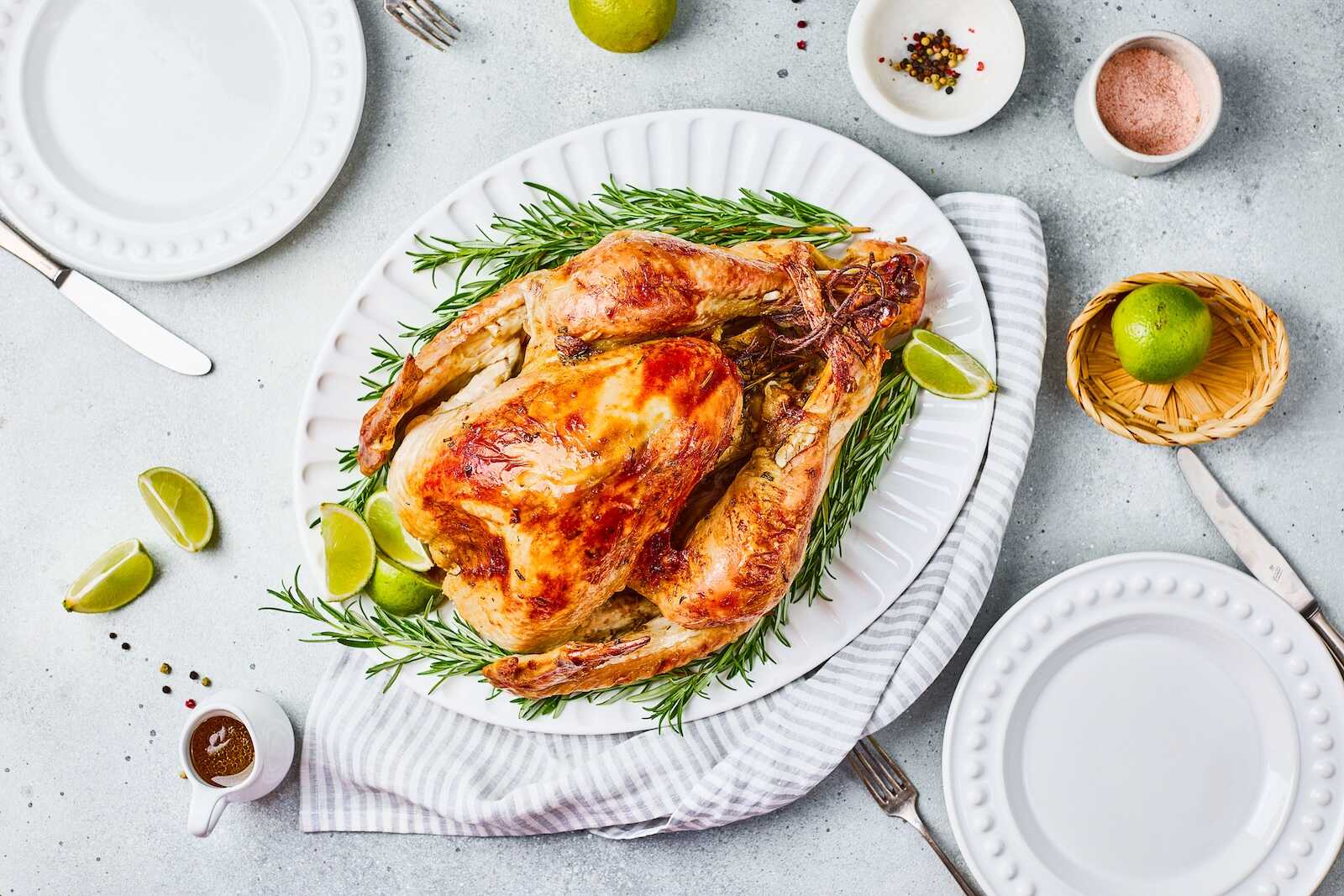
Thanksgiving wouldn’t feel complete without the star of the table: a beautifully roasted whole turkey. For many first-time hosts, cooking a turkey can feel intimidating. After all, it’s not something most people practice throughout the year. But the truth is—roasting a turkey is much easier than you think. With the right steps, a little planning, and some simple ingredients, you can put a golden, juicy, and flavorful bird on the table that your guests will rave about.
This beginner-friendly guide breaks down everything you need to know: from choosing the right size turkey to thawing, seasoning, roasting, carving, and even what to do with the leftovers.

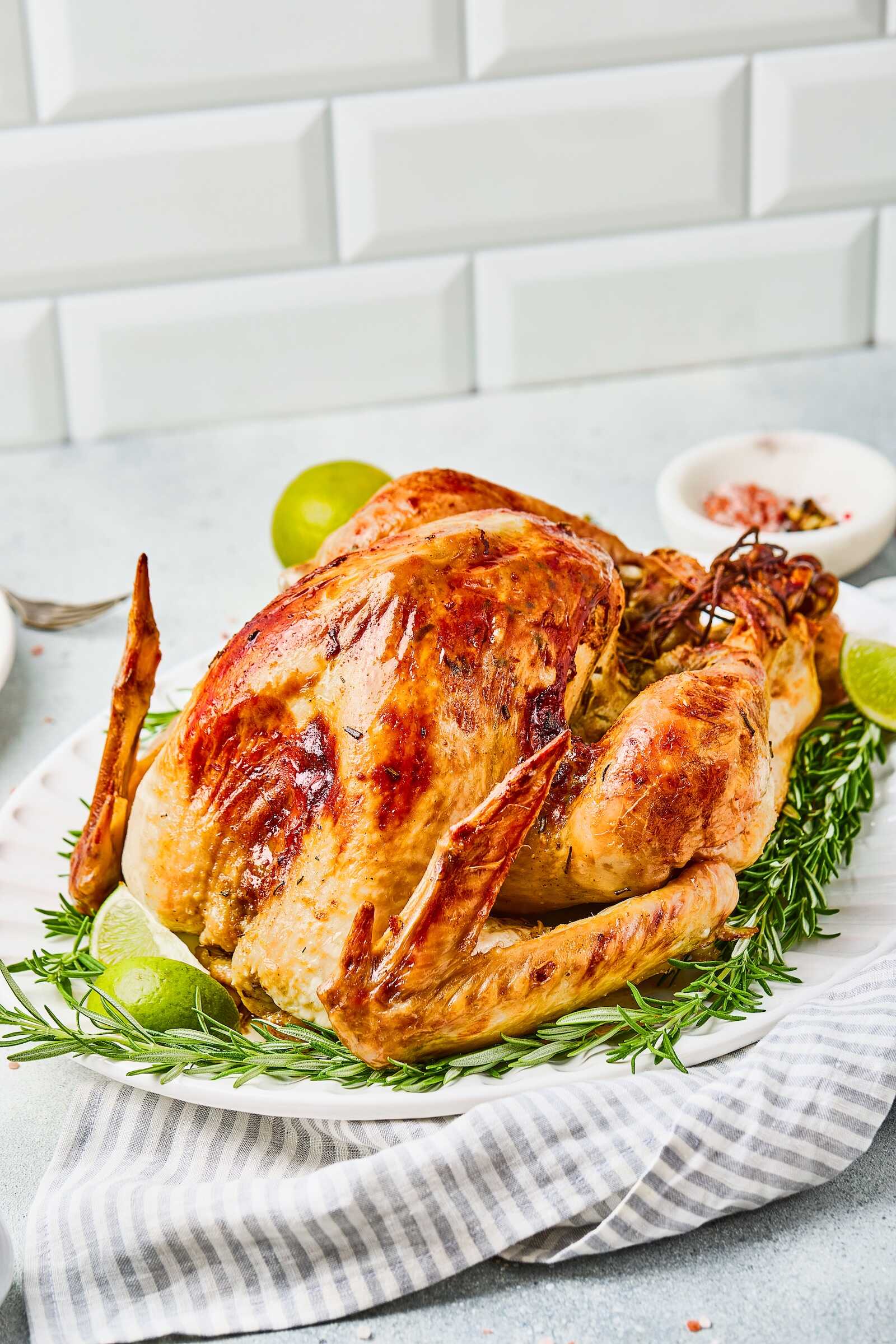
Why Cooking a Whole Turkey Isn’t as Scary as It Seems
Cooking a whole turkey seems like a big job, but once you break it down, it’s simply a matter of prep, patience, and timing. Unlike many recipes that need constant attention, a turkey spends most of its time roasting in the oven while you prepare your sides and set the table.
By the end of this guide, you’ll feel confident enough to skip the store-bought pre-cooked turkeys and wow your family with your homemade masterpiece.
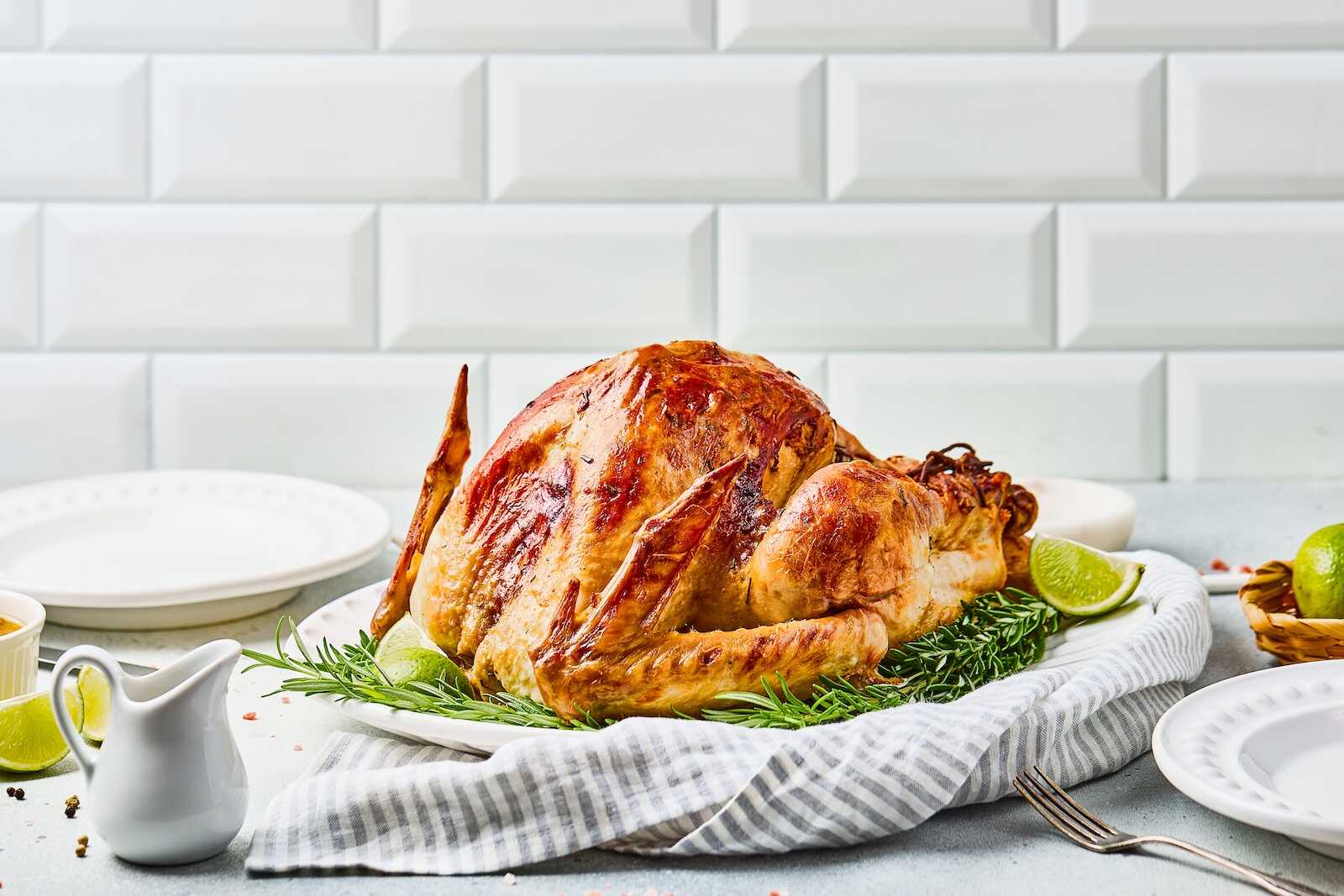
Choosing the Right Turkey
The first decision is what size bird you’ll need. A good rule of thumb is:
- 1–1.5 pounds per person if you want just enough for dinner.
- 2 pounds per person if you’d like plenty of leftovers (which we recommend—you’ll want turkey sandwiches, casseroles, and soups later).
For example:
- A 10–12 lb turkey feeds about 6–8 people.
- A 14–16 lb turkey feeds about 10–12 people.
- A 20 lb turkey can feed a big crowd of 14–16 guests.
Fresh vs. Frozen Turkey
- Fresh turkeys save you thawing time but may need to be pre-ordered.
- Frozen turkeys are widely available and budget-friendly but require days to thaw in the fridge.

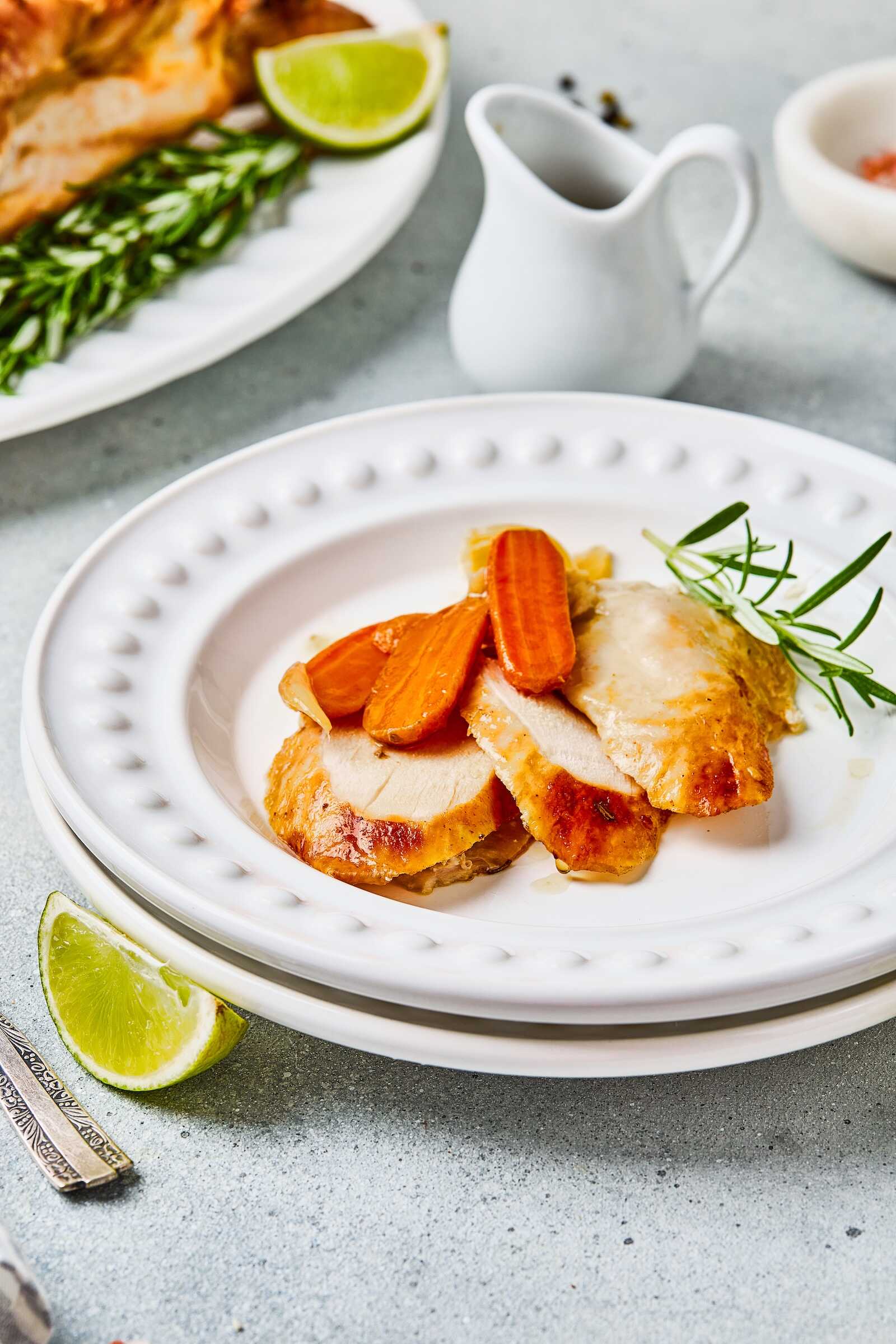
How to Thaw a Turkey Safely
The #1 mistake beginners make is underestimating thawing time. A frozen turkey must thaw completely before roasting. Here’s how:
- In the fridge (recommended): 24 hours for every 4 pounds.
- Example: A 16 lb turkey needs 4 days in the fridge.
- In cold water (faster method): 30 minutes per pound, changing the water every 30 minutes.
- Example: A 16 lb turkey needs 8 hours submerged in cold water.
Never thaw at room temperature—it’s unsafe and can cause foodborne illness.
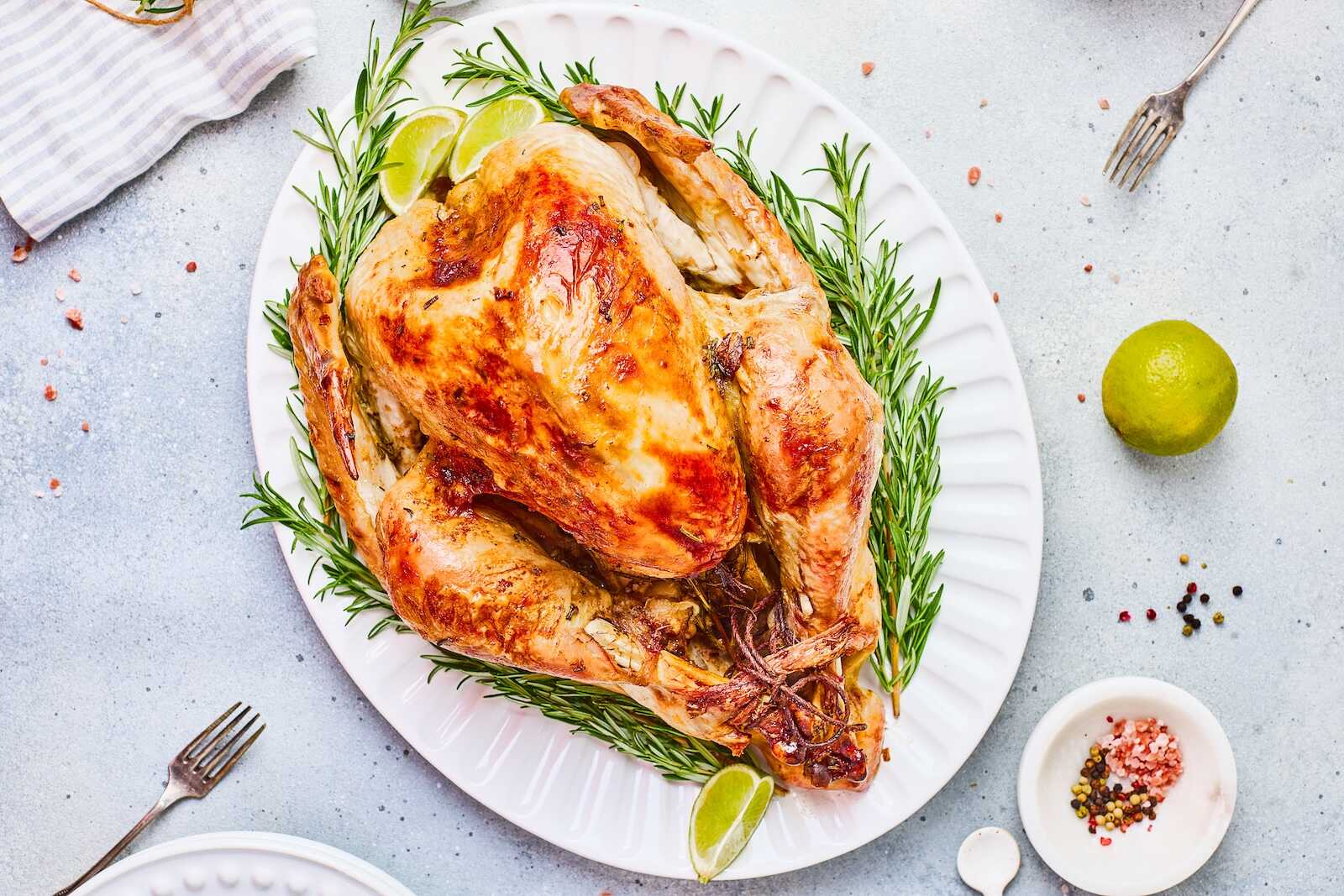
Cooking Supplies You’ll Need to Make a Whole Turkey
Before you start, having the right tools on hand makes the process smoother and less stressful. Here’s a checklist of essential supplies for roasting a whole turkey:
- Roasting Pan with Rack – A sturdy roasting pan is key. The rack elevates the turkey, allowing hot air to circulate for even cooking and preventing soggy skin.
- Meat Thermometer – An absolute must-have for beginners. It ensures your turkey reaches the safe internal temperature of 165°F without overcooking.
- Aluminum Foil – Useful for tenting the turkey if it browns too quickly.
- Kitchen Twine – For tying the turkey legs together so it cooks evenly and holds its shape.
- Basting Brush or Bulb Baster – Handy for brushing or spooning juices over the turkey to keep it moist.
- Carving Knife and Fork – A sharp carving knife makes slicing smooth and professional-looking. The fork helps stabilize the turkey while carving.
- Cutting Board (with a groove) – A large, sturdy board with a juice groove will catch drippings while you carve.
- Fat Separator (optional) – Makes it easy to remove fat from drippings for a smooth gravy.
- Serving Platter – For presenting your turkey beautifully at the table.
Having these items ready before you begin eliminates last-minute scrambling and helps you feel confident tackling the main dish.
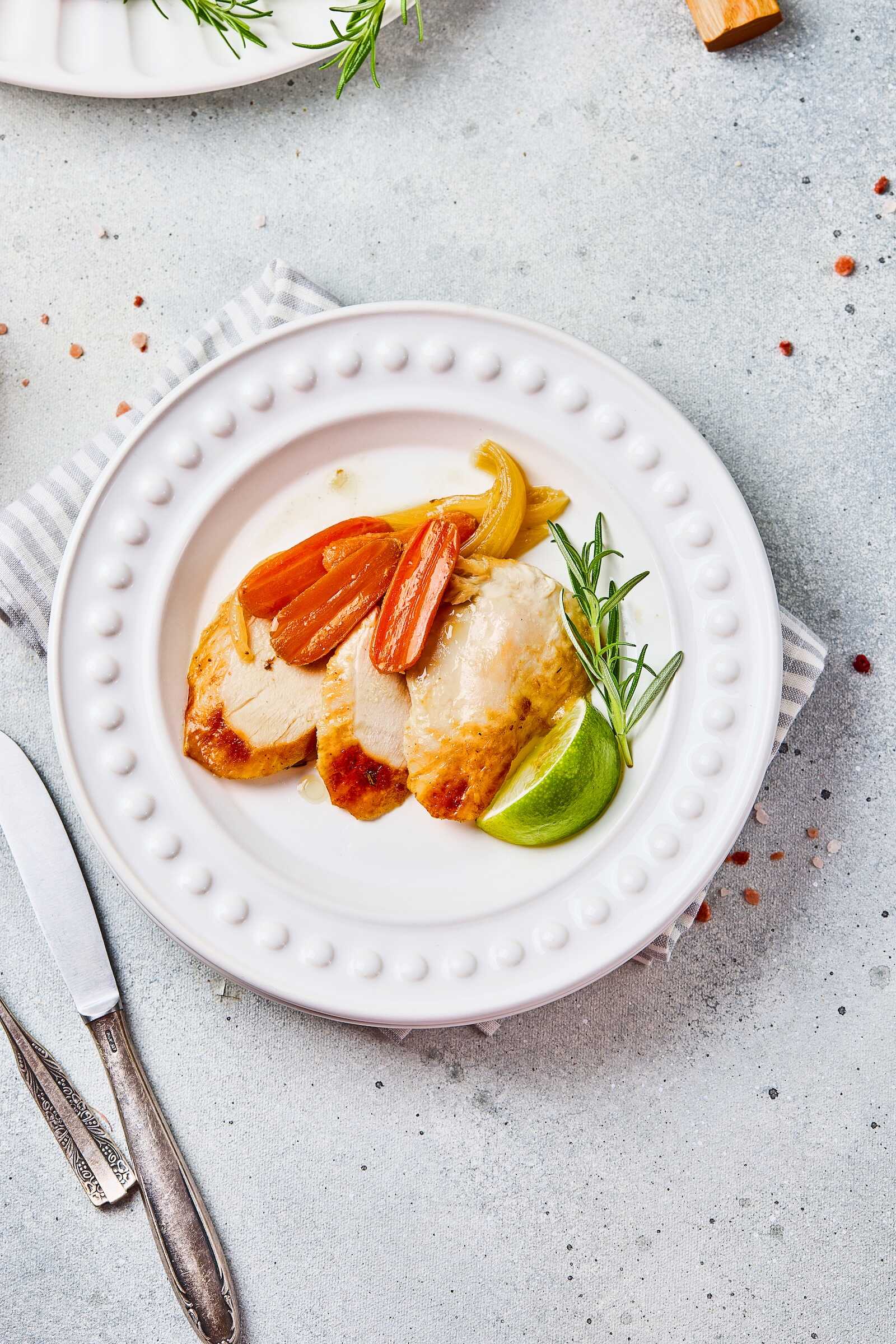
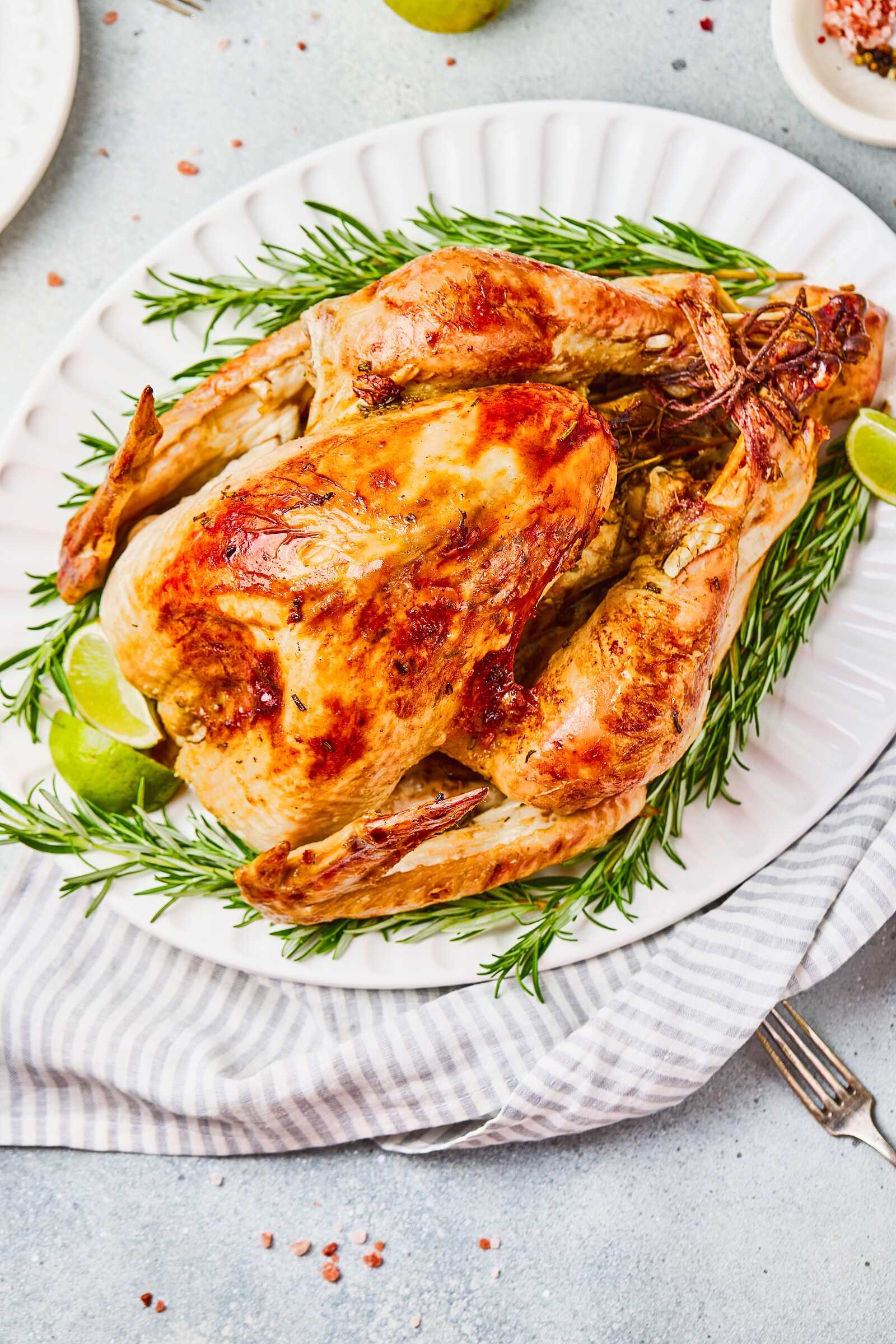
Gather Your Ingredients
This easy beginner recipe keeps things simple yet flavorful:
For the Turkey:
- Whole turkey (≈4 kg / 7 lb), fully thawed
- 1 onion, quartered
- 2 limes, quartered
- 2–3 sprigs fresh rosemary
- 6–8 bay leaves
- Kosher salt & black pepper, to taste
- Onions cut into quarters (for the cavity)
For the Herb Butter:
- 1 cup unsalted butter, softened
- 8 garlic cloves, minced
- 1 tsp kosher salt
- ½ tsp black pepper
- 2 tbsp finely chopped rosemary
- (Optional) a little fresh thyme
Optional (for extra flavor and gravy):
- Chopped celery, carrots, and onion placed under the turkey

Prepping the Turkey
Remove Giblets and Neck
The guts are usually in a bag inside the cavity. Save for making gravy or stock.
Pat the Turkey Dry
Pat the turkey dry with paper towels—this helps the skin crisp up.
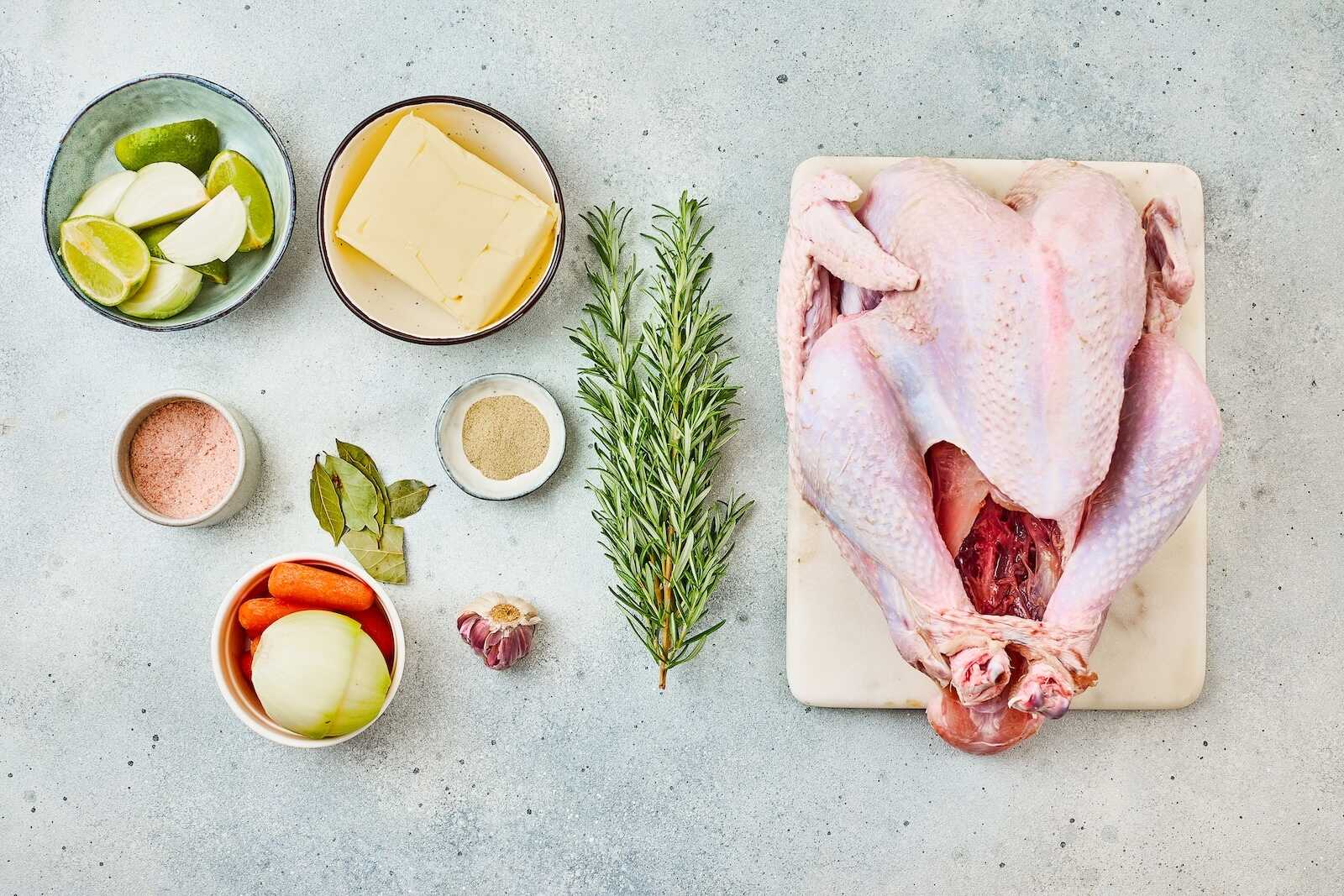

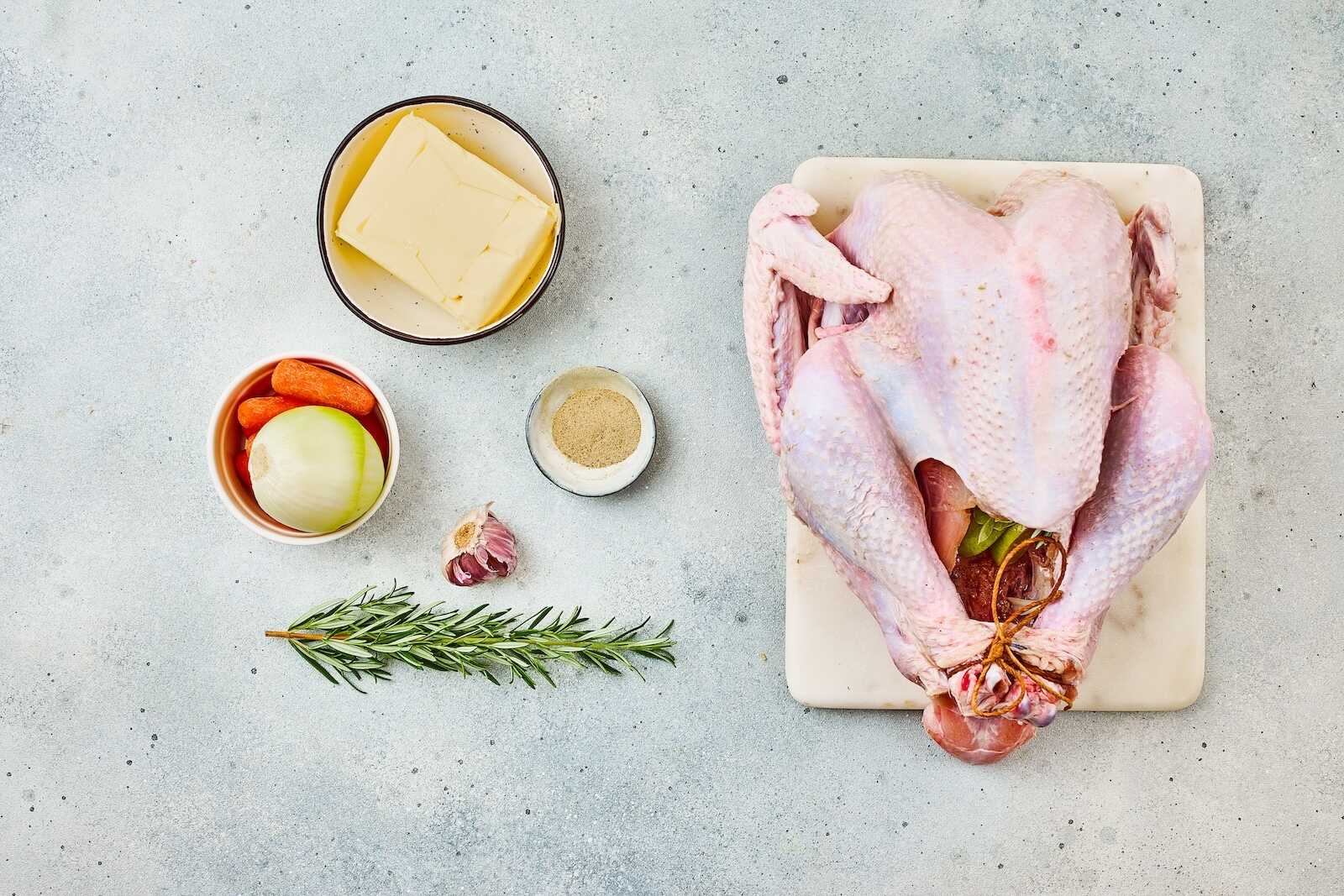
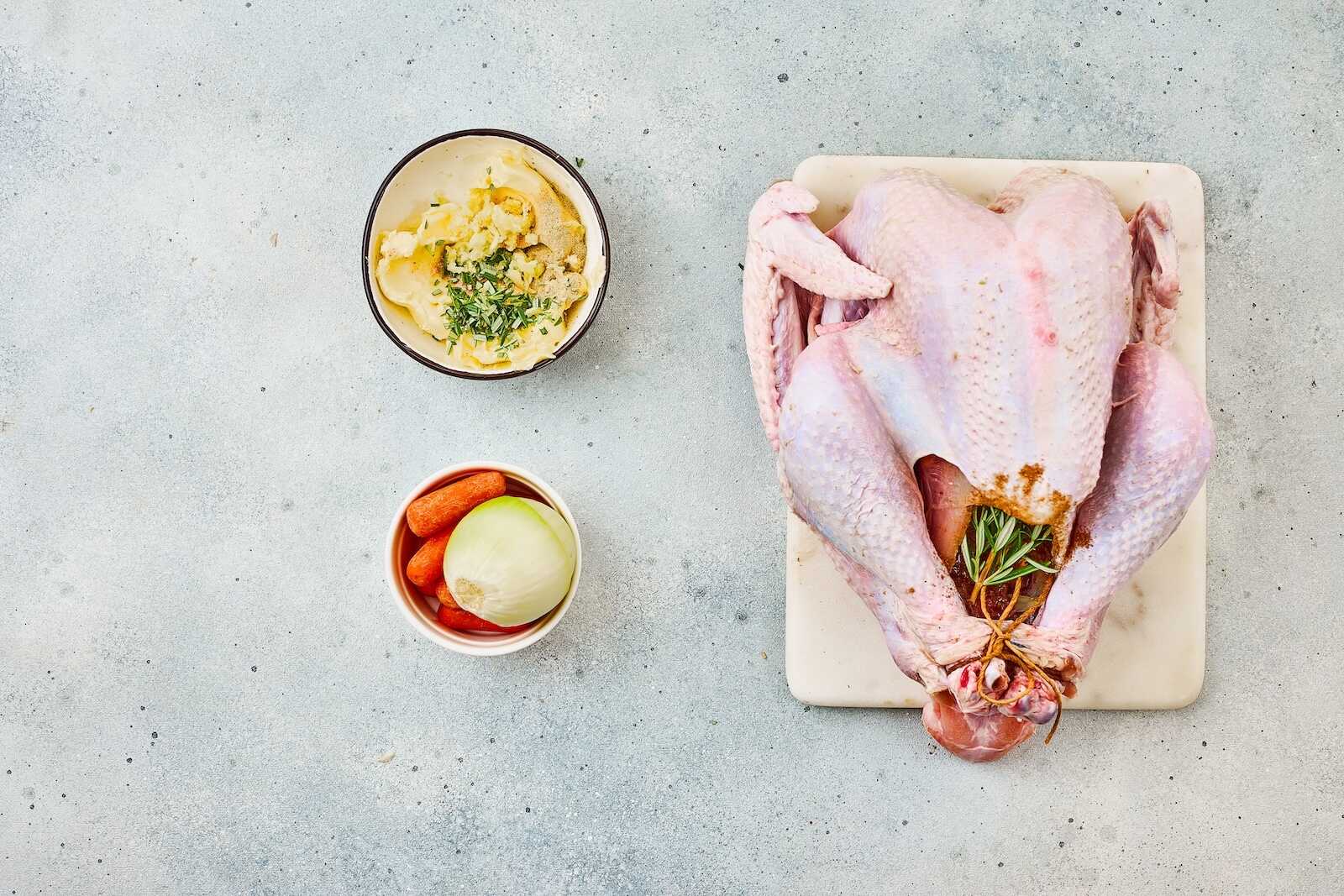
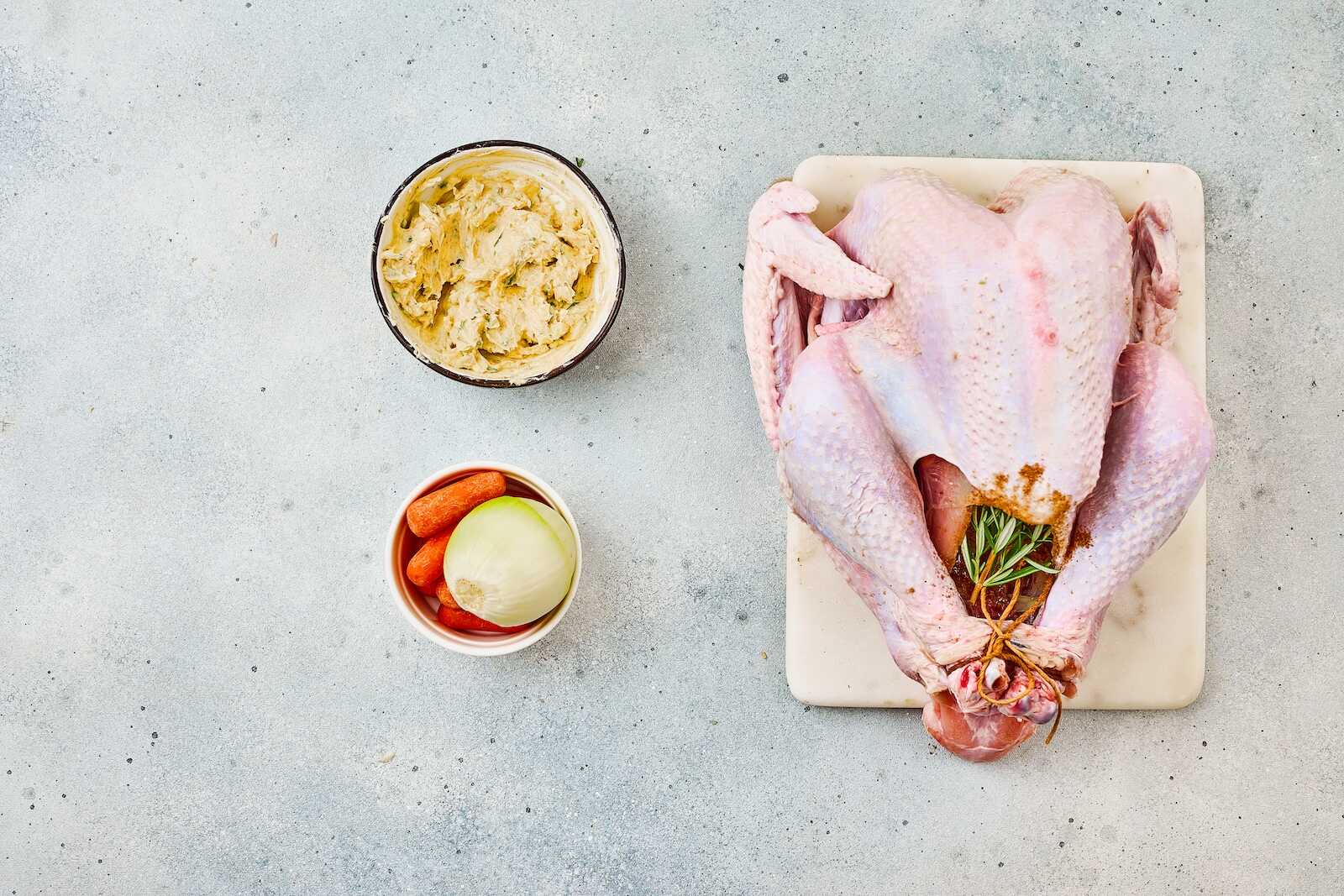
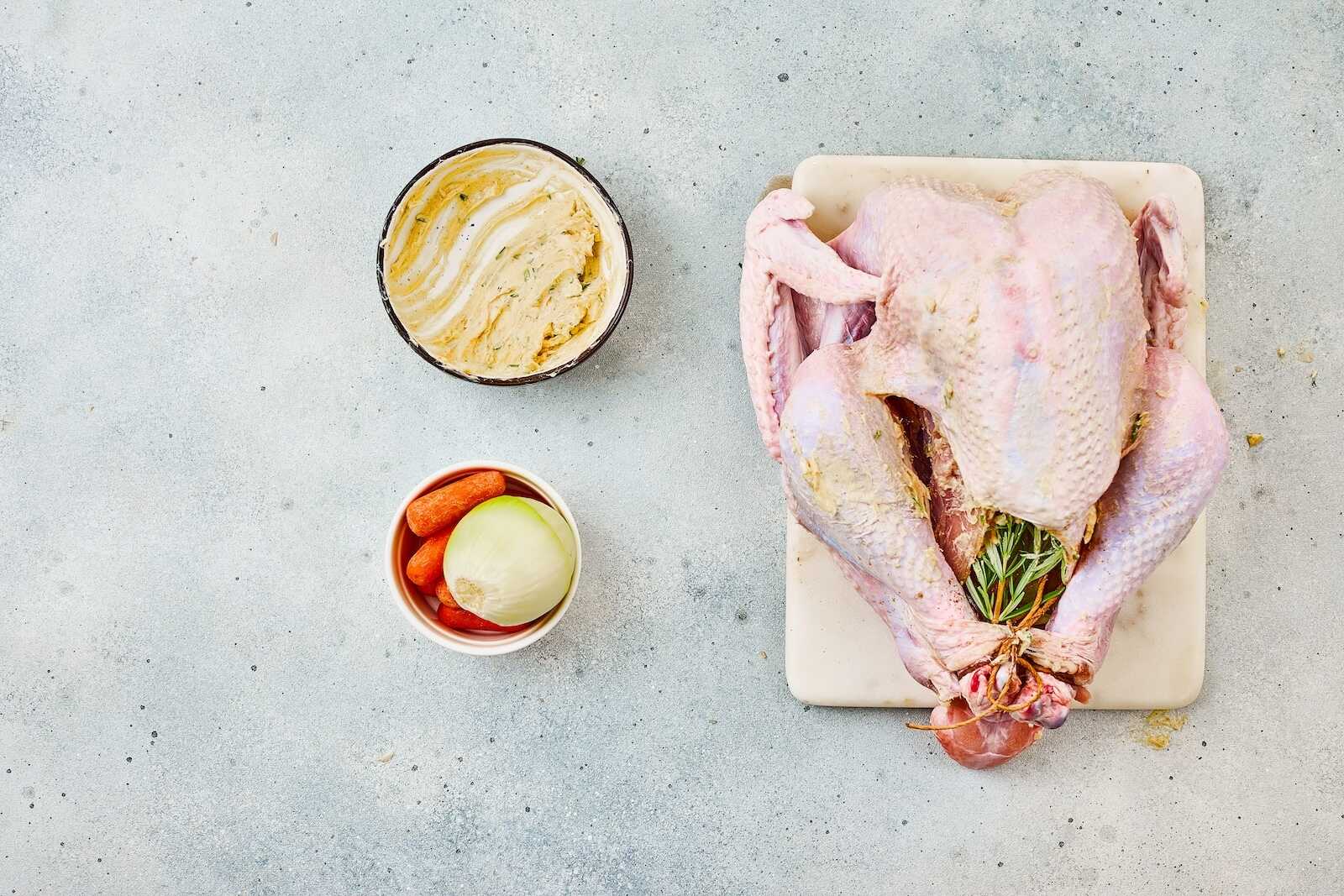
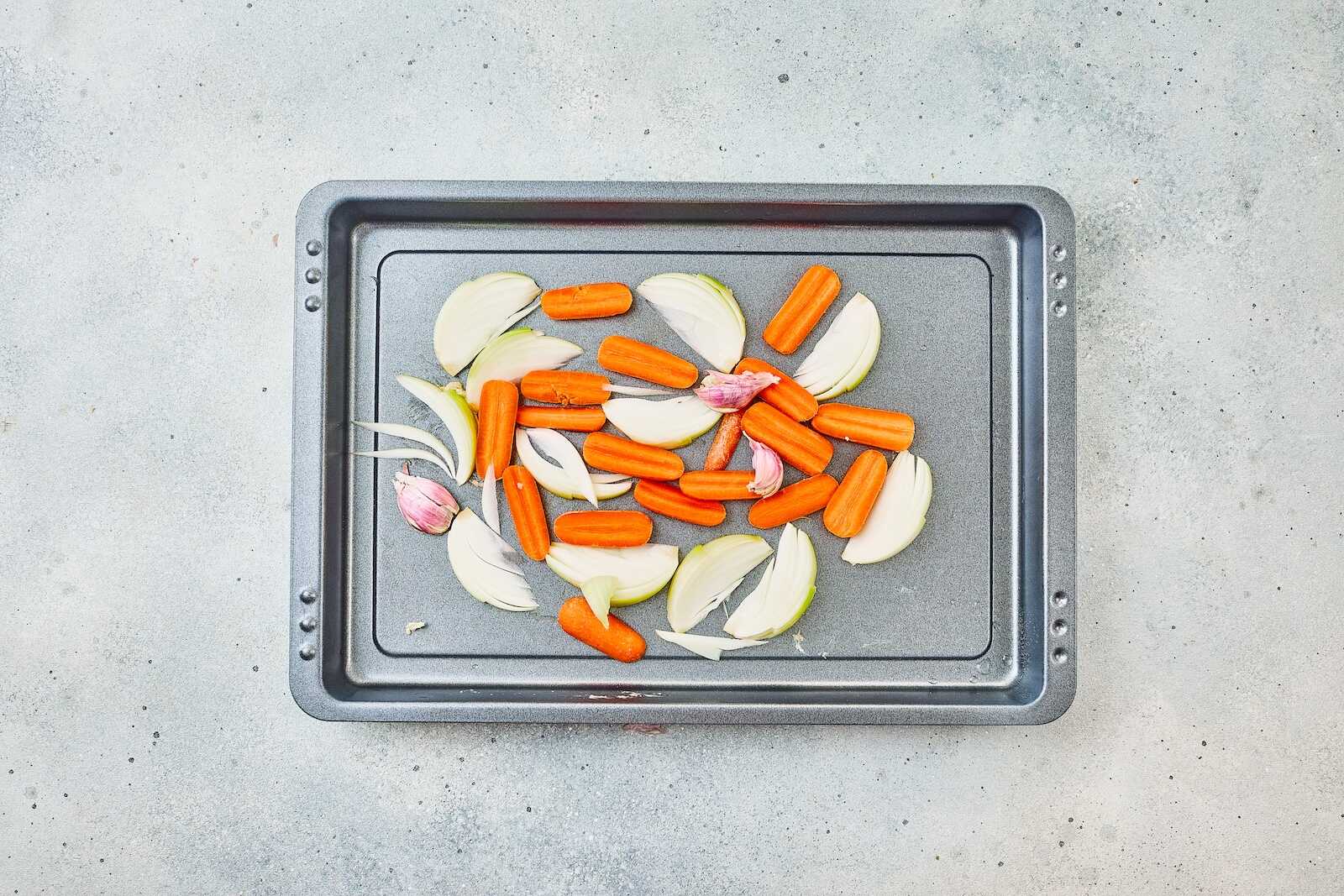
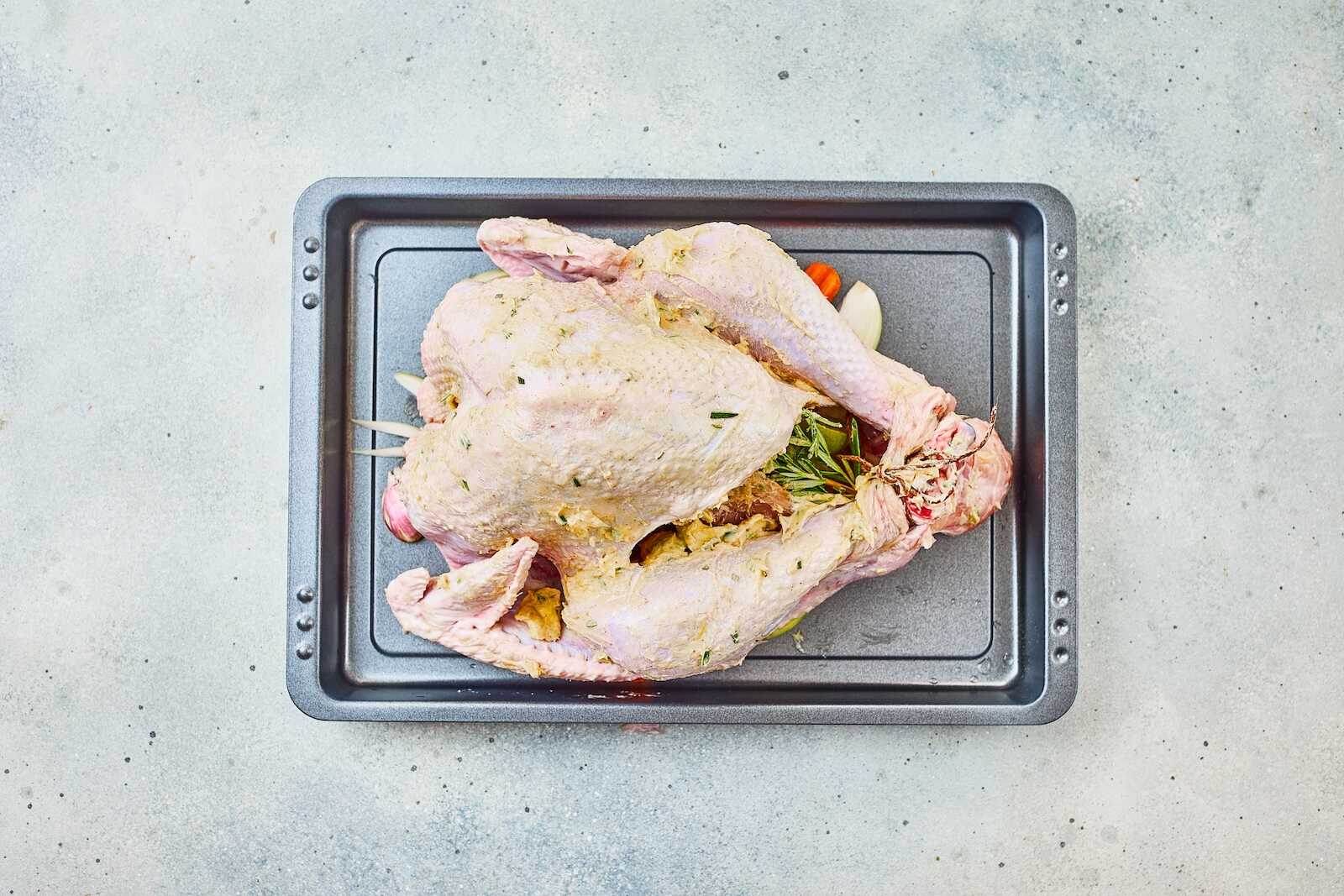
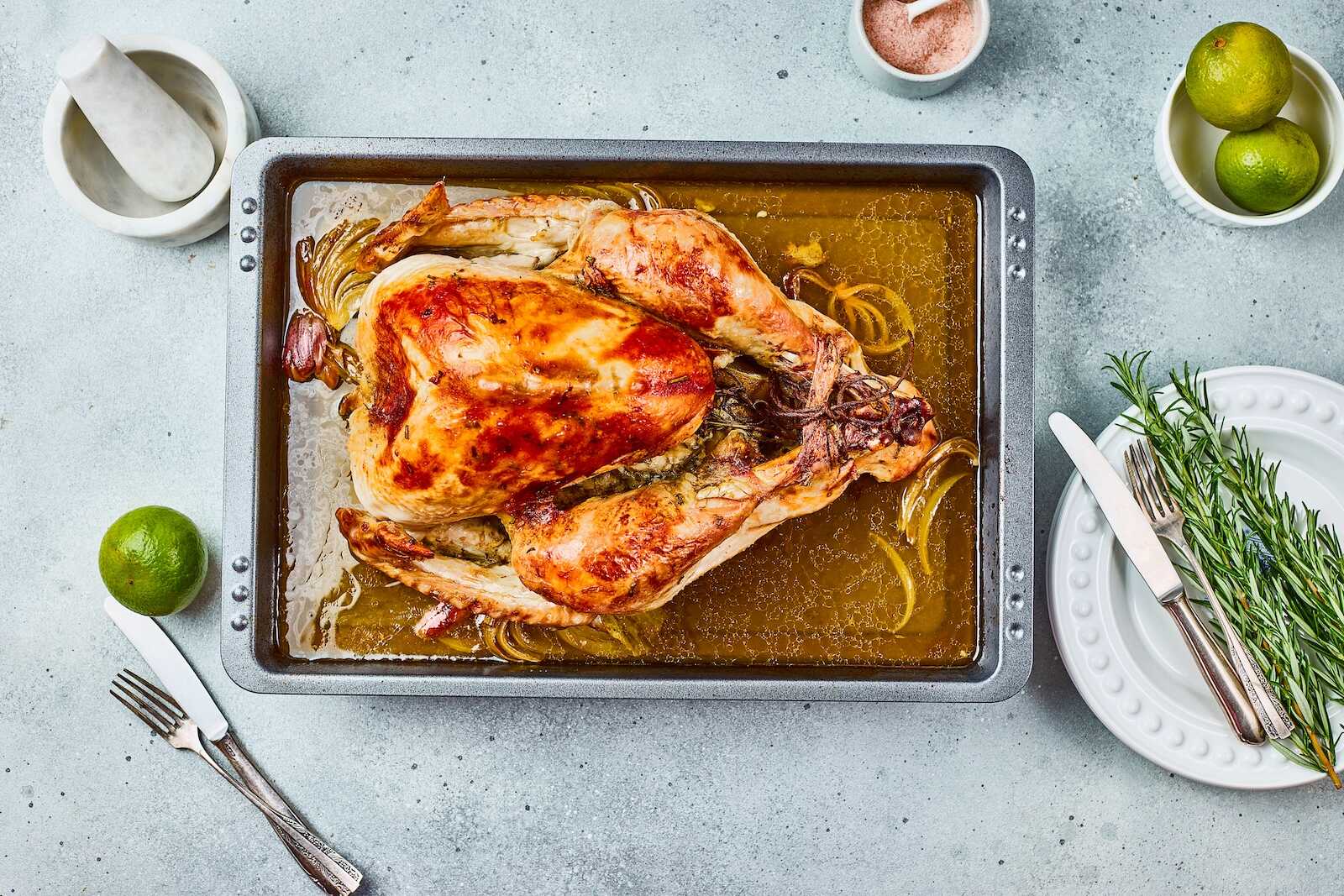
Cooking Instructions
Prepare the Turkey
Take the turkey out of the fridge 1 hour before roasting. Pat dry with paper towels. Preheat oven to 325 °F. Season the cavity with salt and pepper, then stuff with onion, limes, rosemary, and bay leaves.
Make the Herb Butter
Mix softened butter with garlic, salt, pepper, rosemary, and (if using) thyme.
Butter the Turkey
Gently loosen the skin over the breast and spread about ⅓ of the herb butter underneath. Rub the remaining butter evenly over the outside of the turkey.
Seasoning the Cavity
Stuff the cavity with remaining limes, onion quarters, and fresh herbs for aromatic flavor (do not over-pack).
Set Up for Roasting
Place the turkey on a roasting rack or directly over the chopped vegetables. Tie the legs with kitchen twine and tuck the wings under the bird to prevent burning.
Roast
Cook for about 15 minutes per pound, without basting. If the skin browns too quickly, tent loosely with foil. The turkey is done when the internal temperature reaches 165 °F.
Rest
Remove from the oven and cover loosely with foil. Let rest for 30 minutes; the temperature will rise to a safe 165 °F.
Carve and Serve
Slice the turkey and serve with pan juices or use them to make gravy.
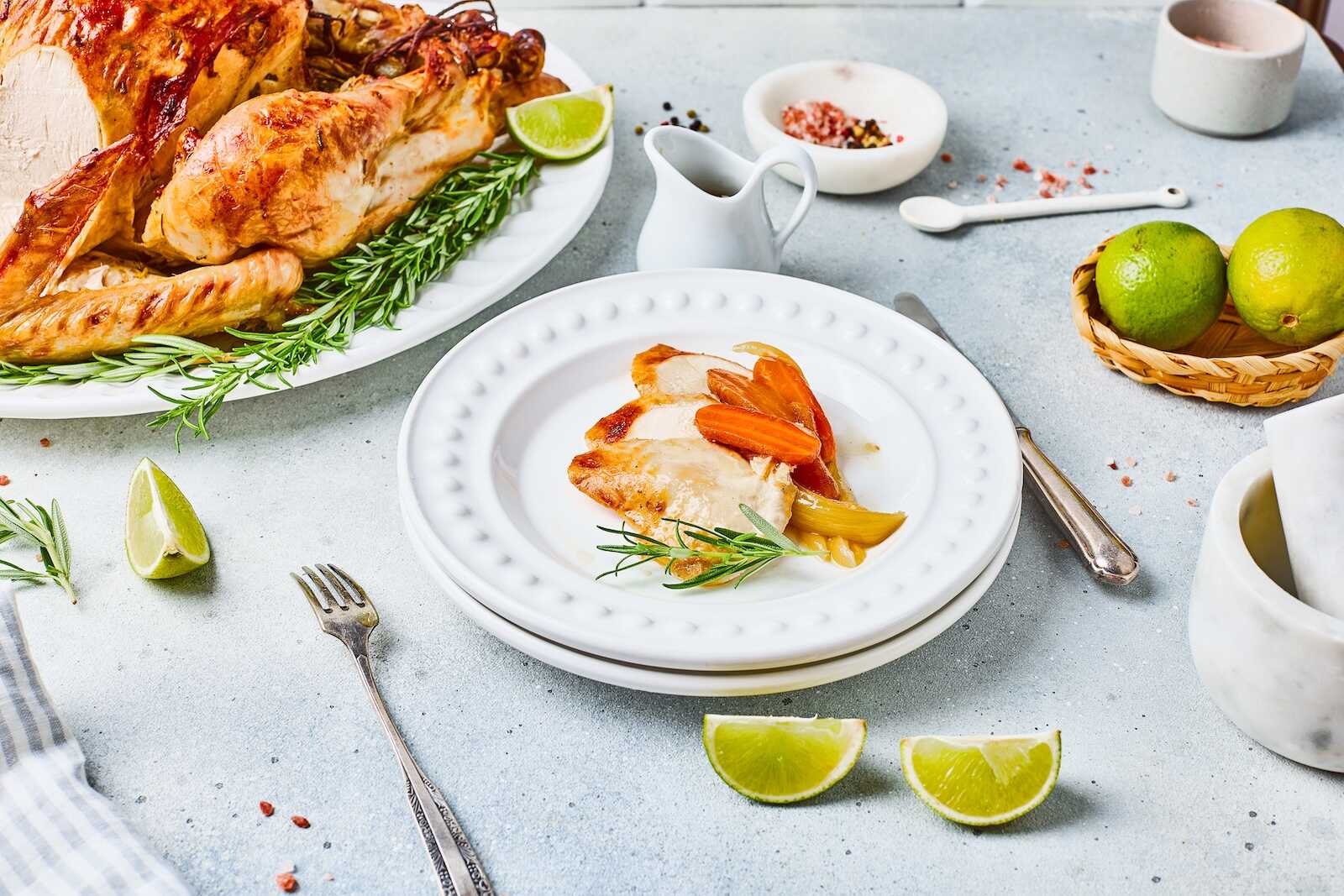
Tips for Roasting Success
- Use a roasting rack: This lifts the turkey so hot air circulates for even cooking.
- Add broth to the pan: Keeps the turkey moist and makes flavorful drippings for gravy.
- Baste occasionally (optional): Every 45 minutes, spoon pan juices over the turkey. (Some chefs skip this, as opening the oven reduces heat.)
- Cover with foil if browning too quickly.
- Resting the Turkey: Once your turkey is golden brown and cooked through, remove it from the oven and let it rest for at least 30 minutes before carving. This resting period allows the juices to redistribute, keeping your meat moist instead of drying out.
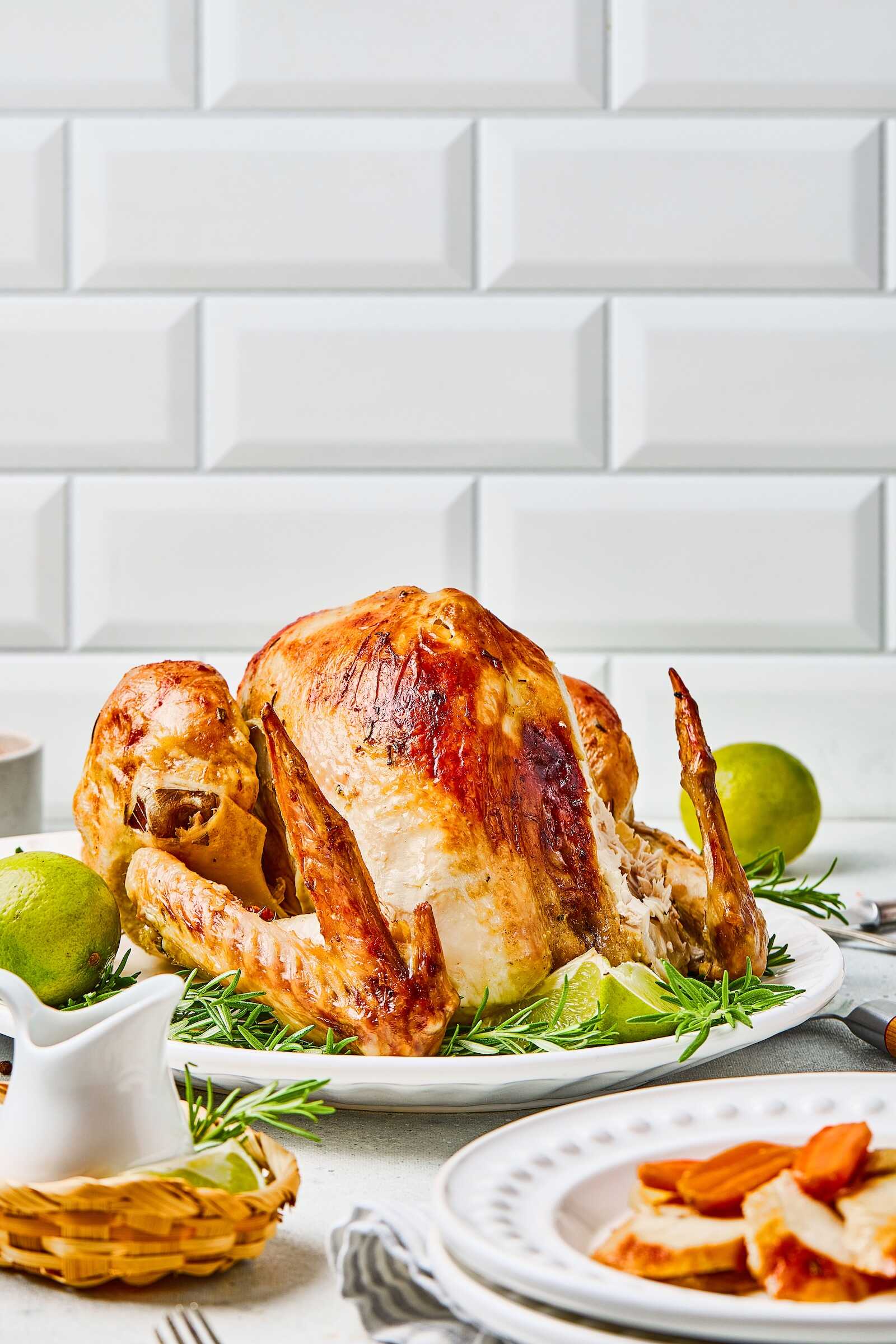

Carving a Turkey Made Simple
Carving can feel intimidating, but it’s straightforward:
- Remove the legs and thighs first. Cut through the joint where the thigh meets the body.
- Slice off the drumsticks.
- Carve the breast by cutting along the breastbone, then slicing horizontally.
- Separate wings.
- Slice meat into serving portions.
Arrange on a platter and garnish with fresh herbs or citrus slices for presentation.
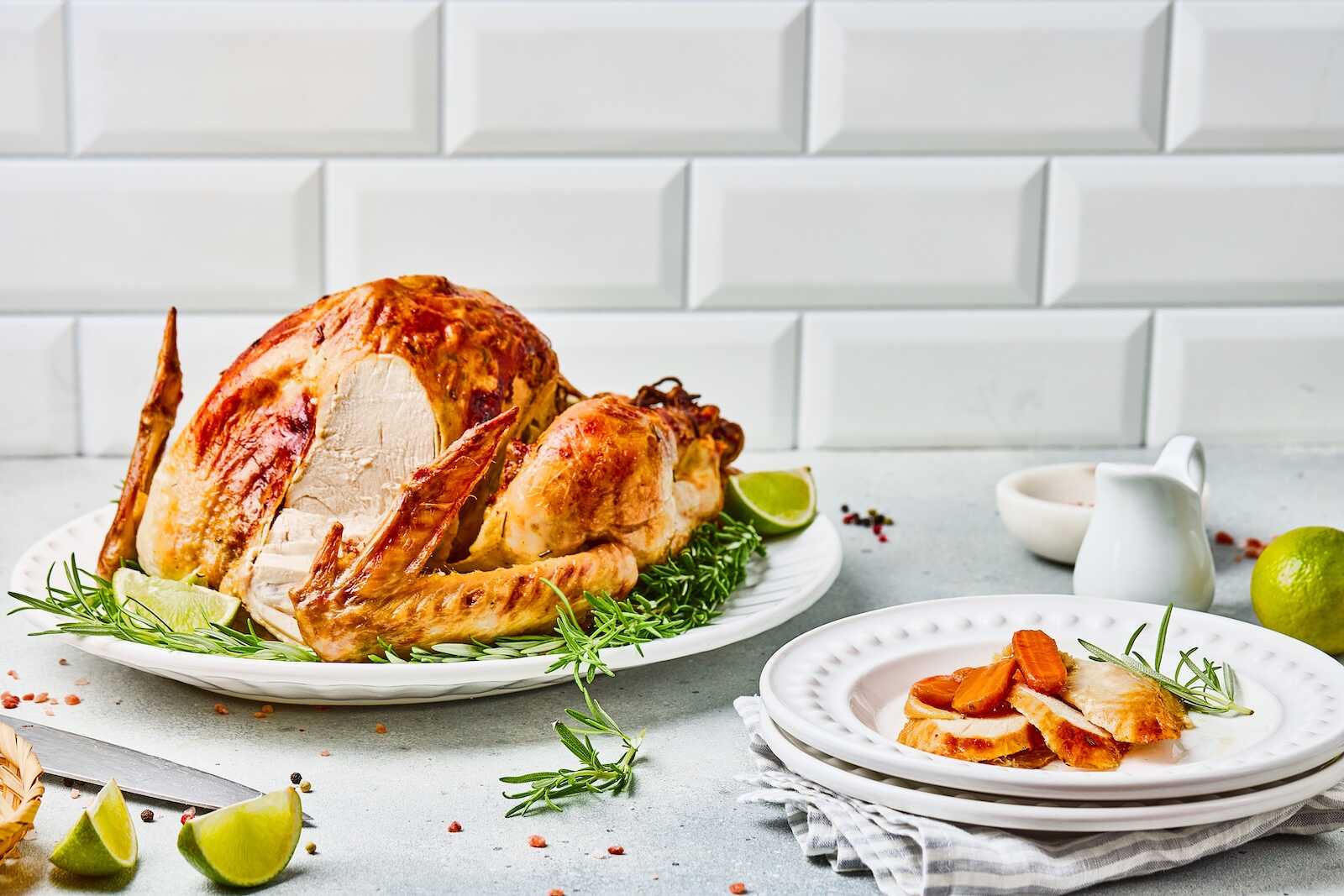
How to Make Simple Turkey Gravy
Your roasted turkey leaves behind drippings that are gold for gravy. Here’s the easy method:
- Pour drippings into a fat separator or measuring cup. Skim off excess fat.
- In a saucepan, melt 2–3 tablespoons butter. Whisk in 2–3 tablespoons flour to form a roux.
- Slowly add 2–3 cups of drippings and/or broth, whisking until smooth.
- Simmer until thickened. Season with salt and pepper.
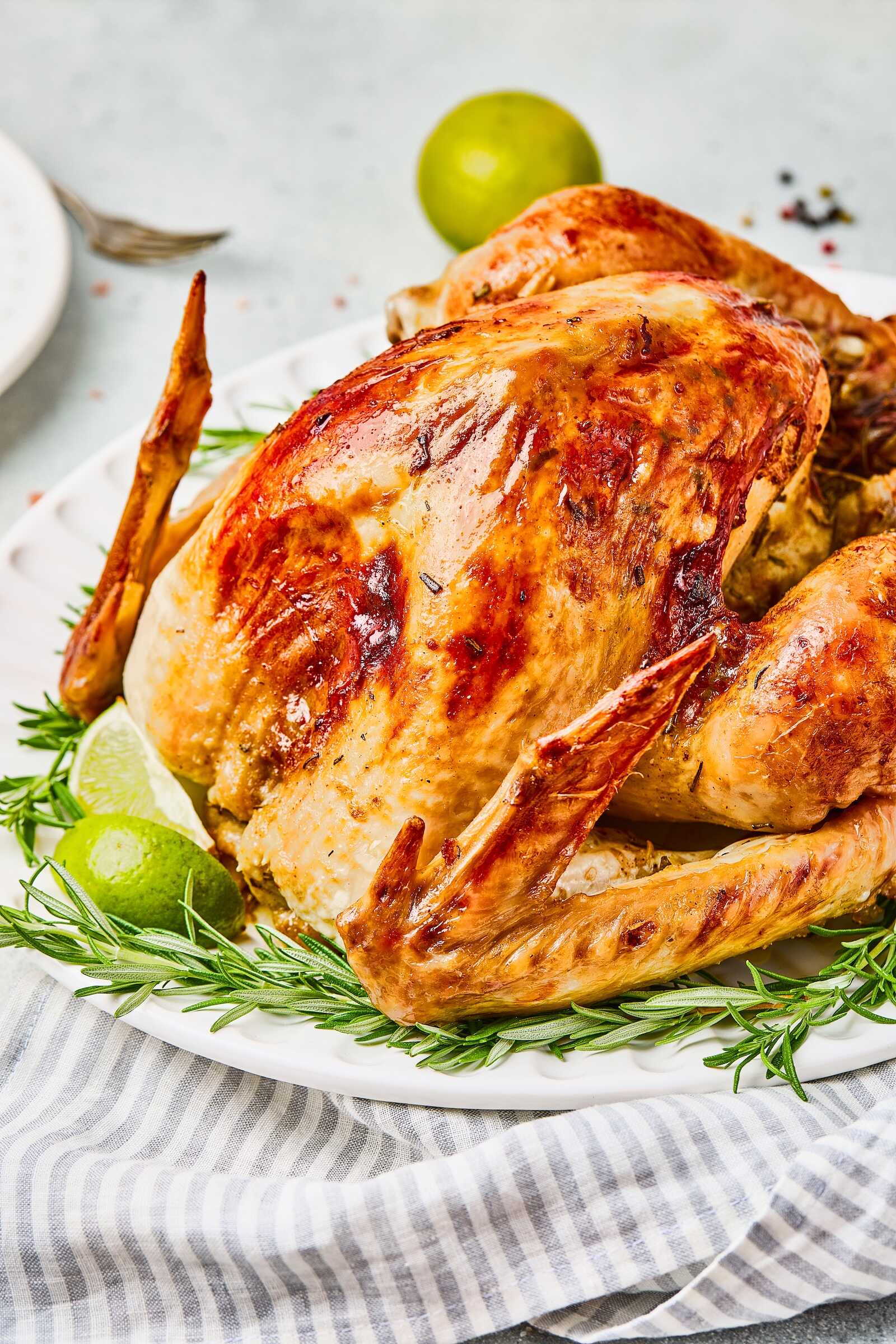
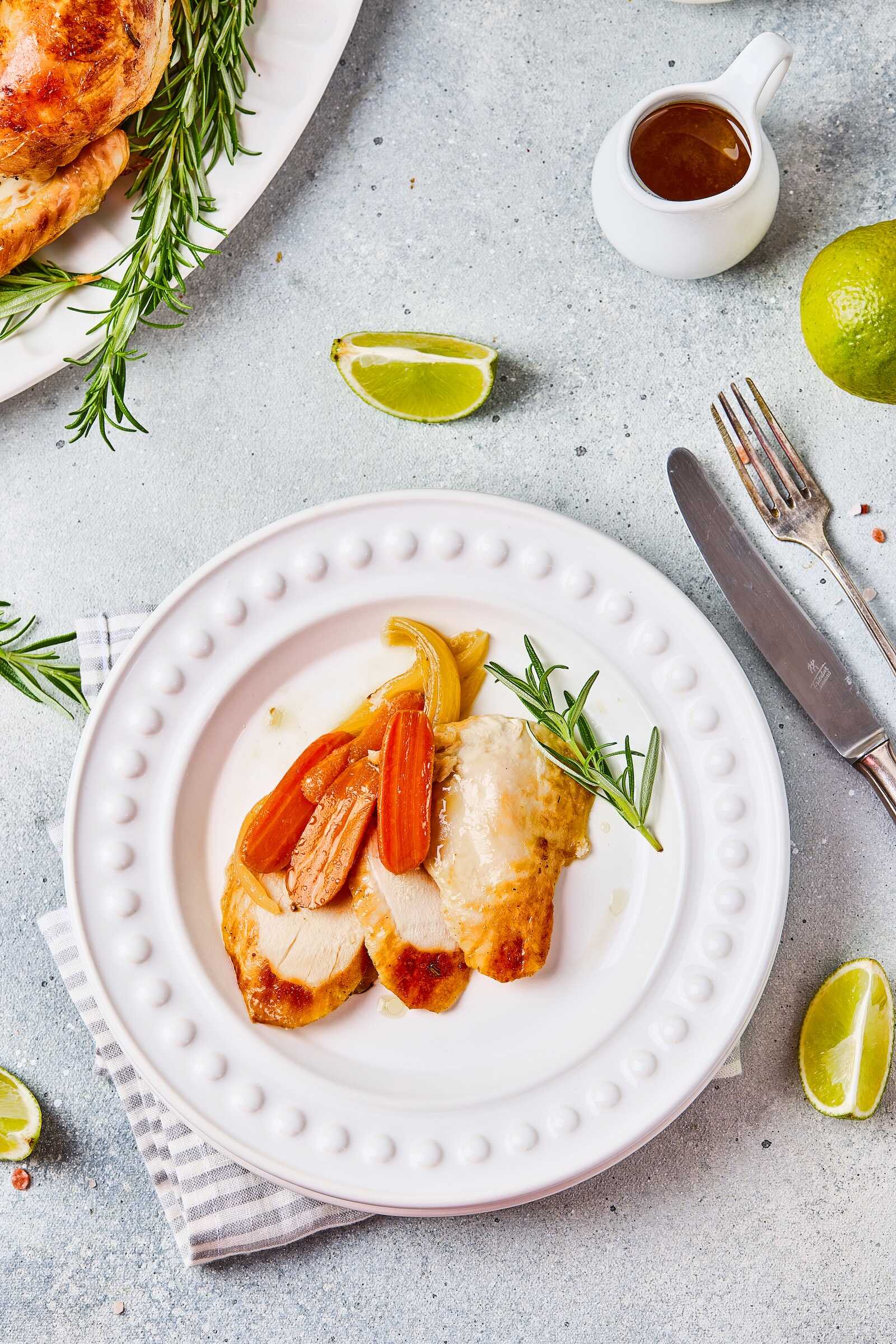
What to Serve with Roast Turkey
Pair your bird with classic Thanksgiving sides:
- Mashed potatoes with gravy
- Stuffing or dressing
- Cranberry sauce
- Green bean casserole
- Roasted Brussels sprouts
- Sweet potato casserole
- Dinner rolls
This combination balances rich, savory turkey with bright, sweet, and hearty accompaniments.

Common Beginner Questions
Q: Do I need to brine my turkey?
Not required, but brining (soaking in salted water overnight) helps keep the meat juicy. Beginners can skip this step without worry.
Q: Should I cook my stuffing inside the turkey?
It’s safer and easier to bake stuffing separately in a casserole dish.
Q: Why is my turkey skin not crispy?
Make sure to pat the turkey dry, rub with butter/oil, and roast uncovered.
Q: Can I prep my turkey the night before?
Yes! You can season it, cover loosely with foil, and refrigerate overnight.
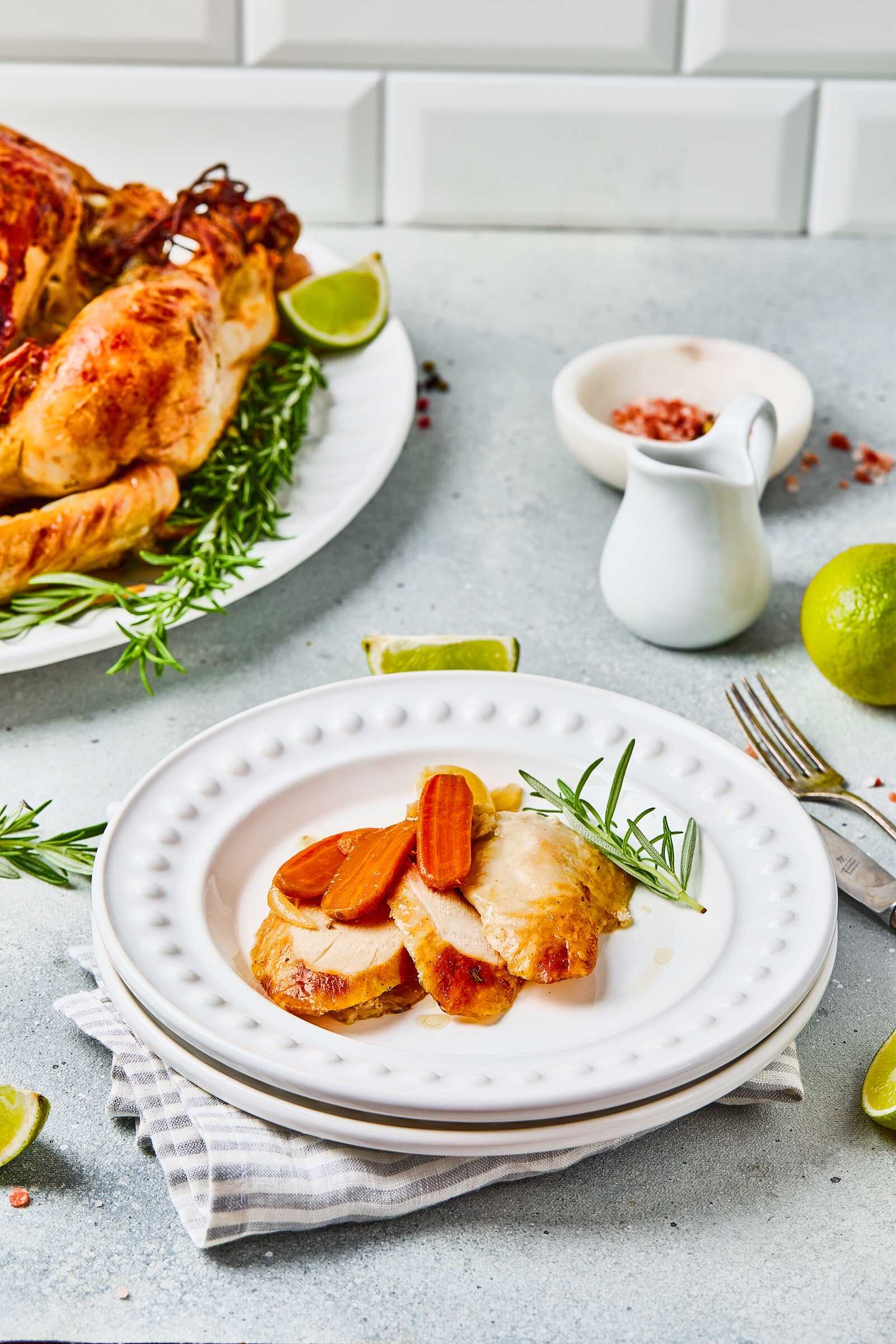
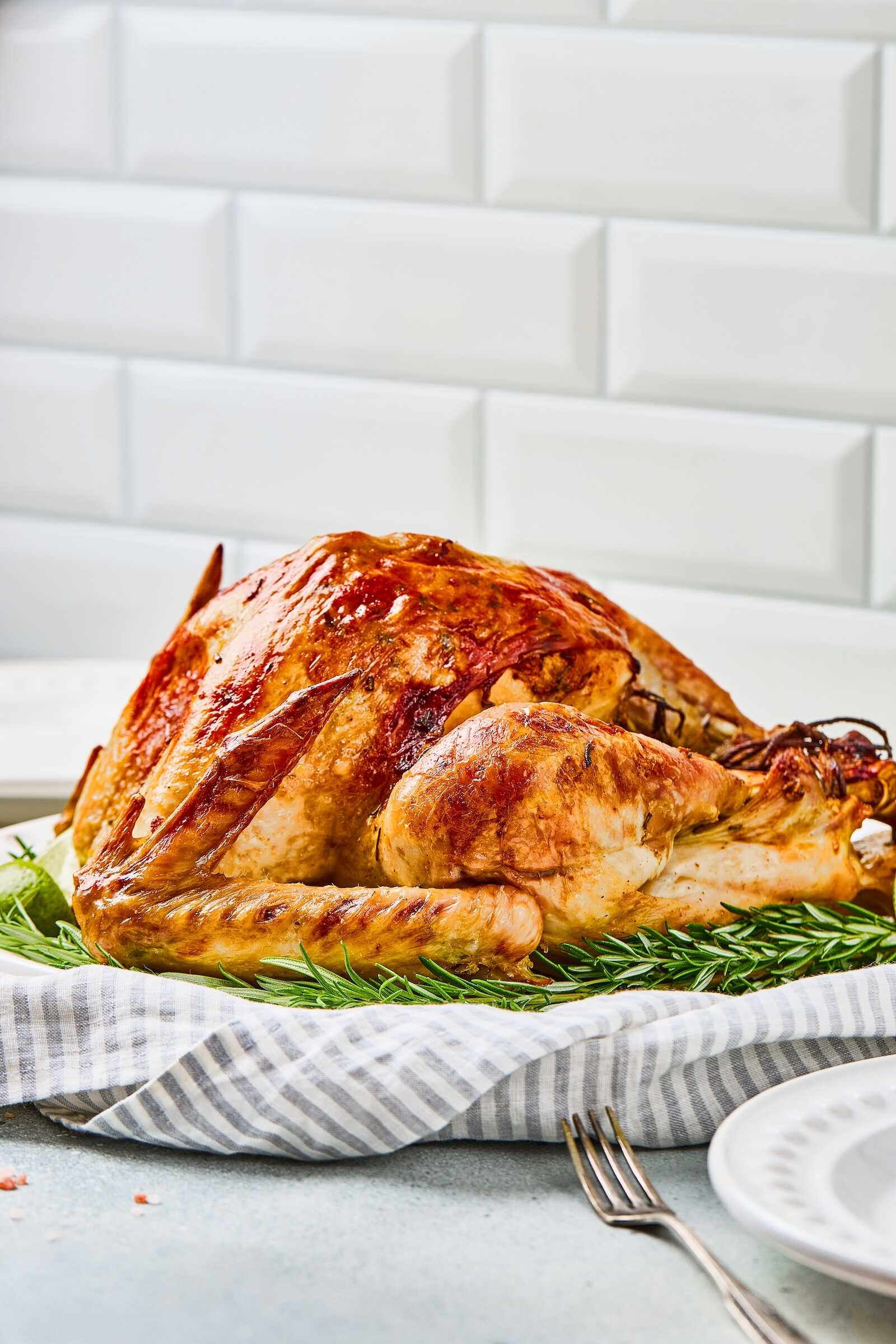
Leftover Turkey Ideas
Thanksgiving leftovers are almost as good as the main event. Try these:
- Turkey Sandwiches with cranberry sauce and stuffing.
- Turkey Soup with leftover bones for homemade broth.
- Turkey Pot Pie with veggies and gravy.
- Turkey Casserole baked with pasta or rice.
- Turkey Quesadillas or wraps for a quick lunch.
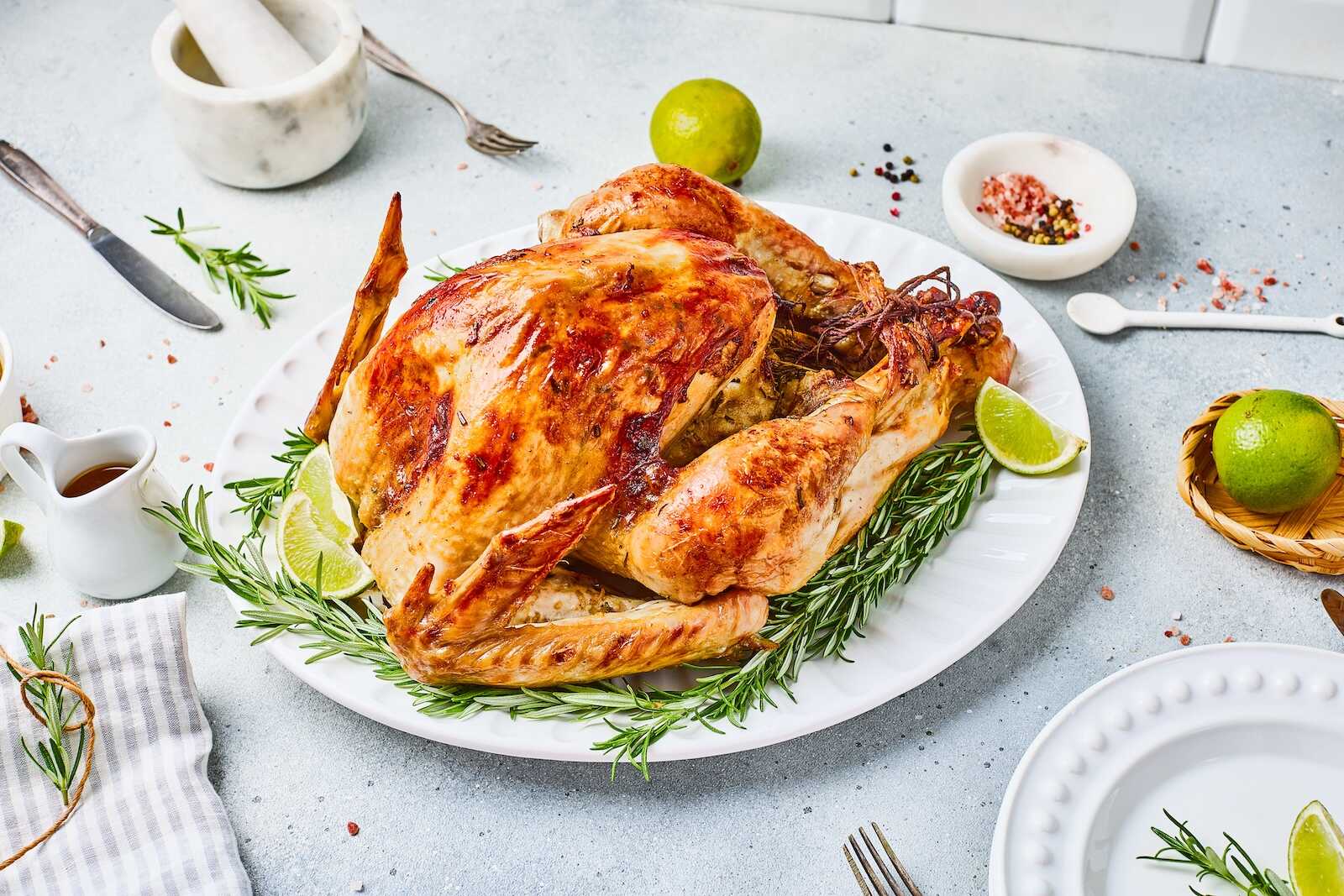
Tips to Keep Stress-Free
- Start early: Give yourself extra time for thawing and roasting.
- Use timers: Set reminders for basting and checking temperature.
- Don’t aim for perfection: Even if your turkey isn’t picture-perfect, it will taste delicious.
- Ask for help: Thanksgiving is about togetherness—get guests involved with sides or dessert.
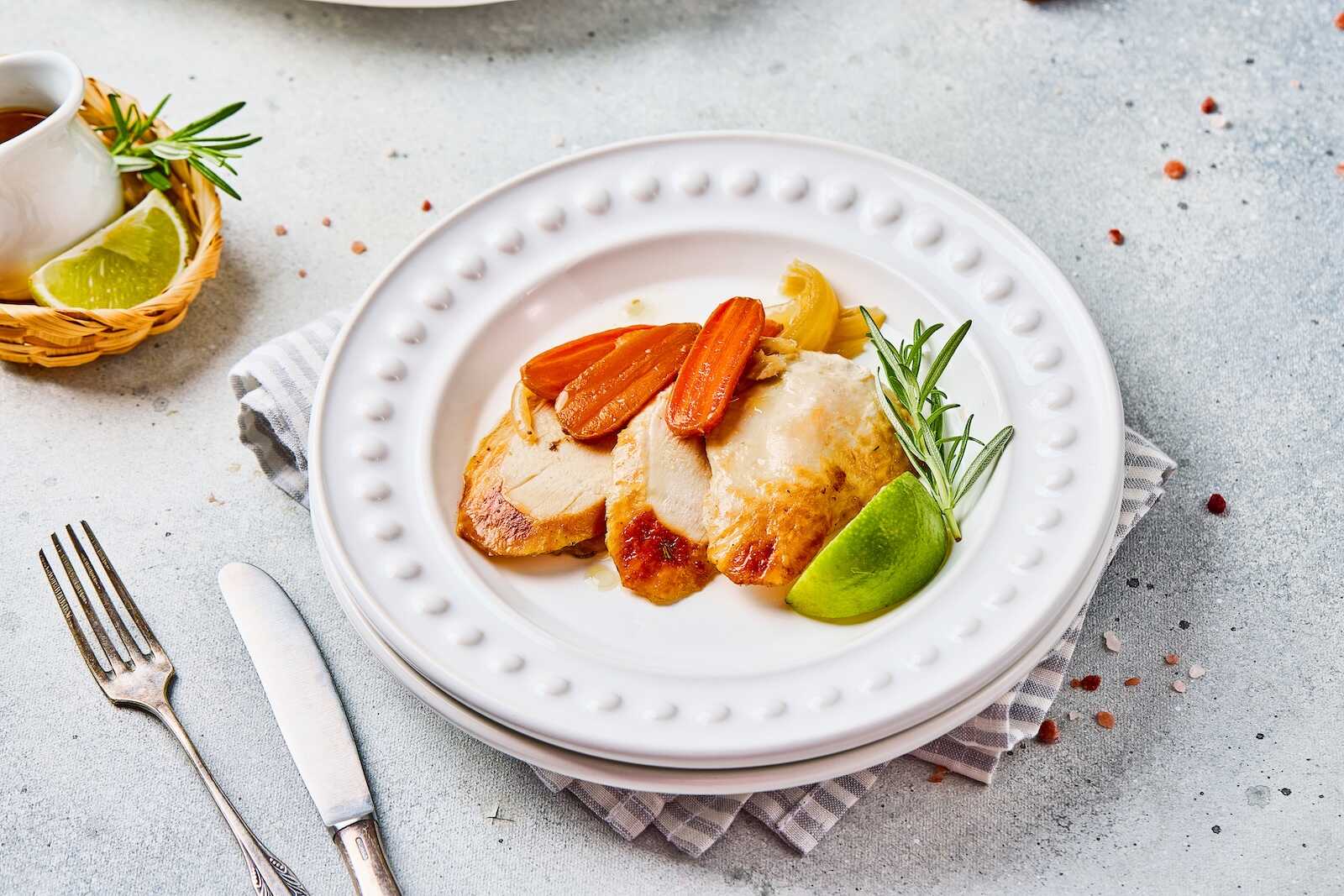
In Conclusion
Cooking a whole turkey may feel like a big leap for beginners, but once you break it down, it’s really just a simple process of prep, season, roast, and rest. This easy Thanksgiving whole turkey recipe is proof that you don’t need fancy techniques or complicated ingredients to put a flavorful, juicy centerpiece on your holiday table.
Take a deep breath, follow this step-by-step guide, and trust yourself. By the end, you’ll not only have a perfectly roasted turkey—you’ll also have the pride of knowing you created it from scratch. Happy Thanksgiving, and happy cooking!
